What is engagement in Marketing, and why is it important? When it comes to your audience’s shoes, let’s look at it this way: I’m pretty sure you don’t want businesses bugging you to buy their product. But that doesn’t mean you’re not making purchases for your specific needs. When you want to reach out and engage with your potential buyers, it’s a slow and steady process that you cannot expect to have results overnight. Using resourceful content that is well-thought-of to create a meaningful interaction with your audience is the way to do it, and approaching your audience through solid engagement with your social media marketing, email marketing, or video marketing efforts not just by putting these out there, but genuinely building an authentic and lasting relationship with them is how you can get their attention and gain their trust. This relationship is strengthened whenever you reach out to them with your content that continuously provides them interesting and valuable information.
Facebook Group Engagement: How to Develop a Loyal Community
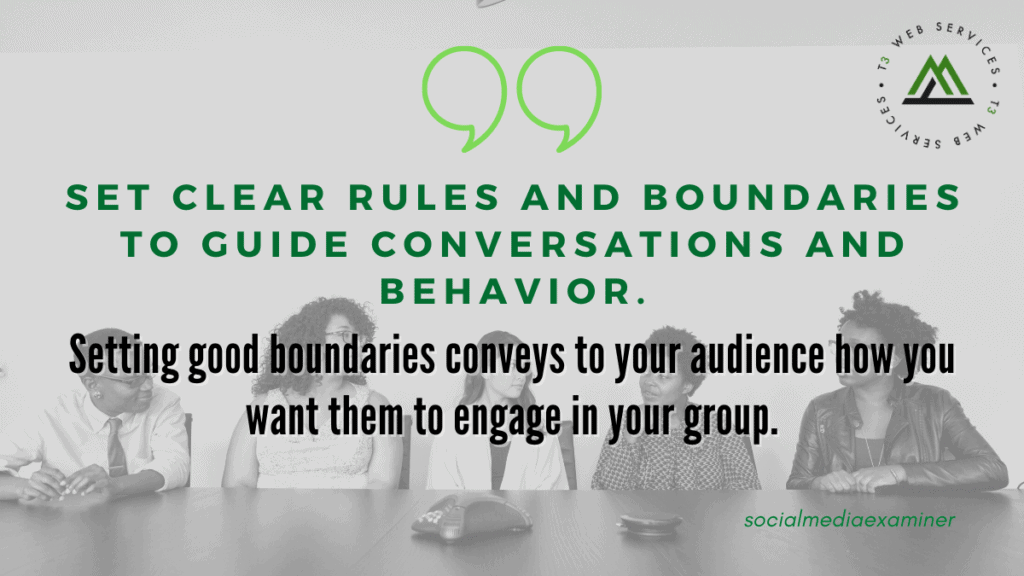

In this article, you’ll find five steps to create a Facebook group that members will return to and engage with. You’ll also get examples of posts you should be using and discover three types of posts to ban from your group.
#1: Decide What Type of Facebook Group Community You Want to Build
Start by determining what kind of Facebook group community you want to create. Think about your favorite places to visit in your local community—the gym, park, movie theater, or local pub. There’s a certain way that people act and engage in those spaces. Your Facebook group works in much the same way.
You need to define the atmosphere you want to create in your group, the kind of people you want to attract, and the types of conversations you want them to have.
#2: Create a Sense of Close Connection
Once you’ve decided what kind of community you want to build, think about how you can create a sense of belonging in your group. You might be thinking, “Do I really need to? My Facebook group is for business and I’m just trying to create conversations around one particular topic.” The reality is that if people don’t feel a sense of connection to your group, they aren’t going to be loyal members who come back day after day.
The easiest way to figure out what kind of belonging you want to cultivate is to fill in the blank in this statement: “You’re not crazy, you’re brave when you ______.” Some examples of this may be “train for a marathon,” “foster eight dogs at a time,” or “quit your job to travel for a year to experience the world.” The idea is to create a sense of belonging that says, “The outside world might not understand you, but we do, so hang out with us.”

https://www.socialmediaexaminer.com/facebook-group-engagement-how-to-develop-loyal-community/
How to Build SEO Into a Product
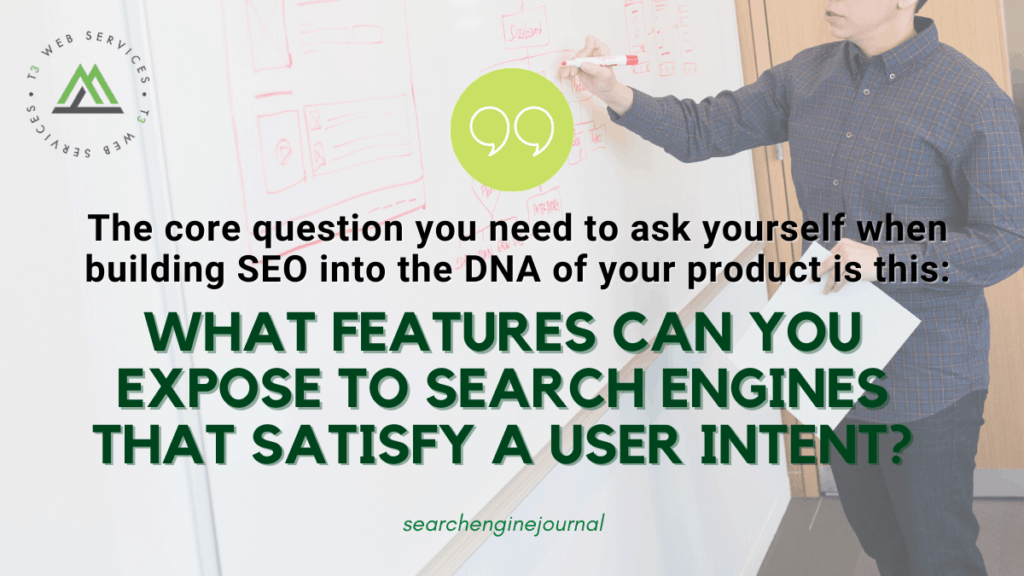

What Does ‘Building SEO Into the Product’ Actually Mean?
Instead of making SEO an afterthought and trying to glue it onto an existing product, “building SEO into the product” means developing a product with SEO in mind.
Considering what user intent it could satisfy.
Thinking about content.
Defining a scalable architecture.
Products with SEO in their core DNA inspire and produce indexable, useful content at scale.
In general, products can be “closed” or “open.”
- Closed products keep the user experience gated.
- Open products allow users to experience a part of the product’s value before signing up.
How Does It Work?
There is no fixed process for developing products, just a set of guidelines and principles:
- Achieve a product-market fit.
- Build something a large market wants.
- Solve real problems.
- Provide a great user experience.
A 5-Step Process for Building SEO Into a Product
Based on this idea, here’s a five-step process to help you build SEO into your product:
1. Identify the Jobs-to-be-Done
When building SEO into a product, you need to understand what jobs people can use it for, which is very related to the core problem you initially set out to solve.
However, you should also look at smaller problems your product solves.
Make a list of all these problems.
2. Match Product Content with Exposable Content
Your product needs to develop, create, or aggregate some sort of content searchers can find through Google and other search engines.
This is often related to user-generated input: reviews, curations, posts, boards, etc.
For example, reviews or votes allow you to aggregate data, visualize it, and expose it to search engines. You can also create the inventory yourself, say for local services or shoppable inventory for ecommerce.

https://www.searchenginejournal.com/build-seo-into-product/391487/?ver=391487X2
2021 Search marketing: The year of automation
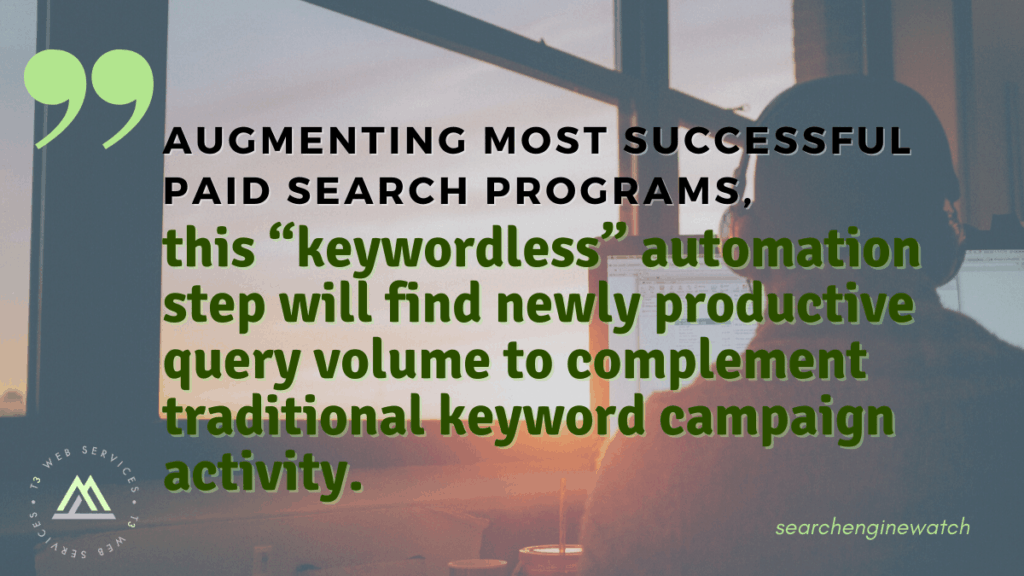

Today’s SERPs are riddled with shopping ads, Quick Answers, popular products, and videos. Key elements marketers must master in 2021 to stay ahead of the search marketing curve.
Pull up your phone and search for any good or service, what do you see? In today’s Google and Microsoft search experiences, you will see loads of images and other visual content staring back at you. The search engine results page (SERP) is a battleground for user attention. It is riddled with colorful paid and organic content including shopping ads, Quick Answers, popular products, and videos. The traditional “blue links” are now just one mere navigational aid. Today’s search users would rather see to believe than read. Let’s explore what marketers must master in 2021 to stay ahead of the curve with search marketing:
1. The customer journey must be known
For years, search, while connected to other media channels, largely felt isolated as a “pull” marketing medium. Its purpose was clear: capture demand and connect products and services to the user’s intent.
Today, however, search excellence requires new connectivity to speak more personally to the customer at different stages of their journey. Doing this well requires leveraging first-party customer data, but also, and equally important, leveraging the platform’s view of the customer, be it Google, Facebook, or Amazon. Modern marketers must leverage first-party data, third-party data, and platform data to create greater experiences and ROI. It is pivotal that marketers get this step of the process right as the third-party cookie deteriorates in 2022, causing a new horizon in marketing. Increased focus and investment must be placed on aligning and connecting data and identities across environments, with a privacy-first mindset. To enable this infrastructure, advertisers must enlist developers to automate datastreams that fuel machine learning algorithms in near real-time. Without this investment, both the knowledge of and intelligence behind the customer’s journey is lost.
2. The machine must run
Automation is a requirement to compete in search, but there has always been a complementary relationship between human and machine. The right approach is “both/and” instead of “either/or”.
Still, modern marketers must stay current and regularly question how much to favor machines over humans and for which elements. Further, within the aspects we may turn over to automation, we have what the advertiser, agency, and platform each uniquely know about the customer on the other end of the query. As such, today’s marketers must capitalize on knowing who is better equipped to inform a particular action we take with our ad program.
For example, the advertiser does not know the three most recent websites the user has visited, but platform A does. Platform A does not know which ads the user has interacted with on platform B, but the agency does. However, the agency is unaware of the offline conversion data for the user in a digital marketing target list. Data assets held by the platforms, the agency and the advertiser need to work together in guiding the machine.

https://www.searchenginewatch.com/2021/01/20/2021-search-marketing-the-year-of-automation/
How to Create a Content Calendar for Your Blog
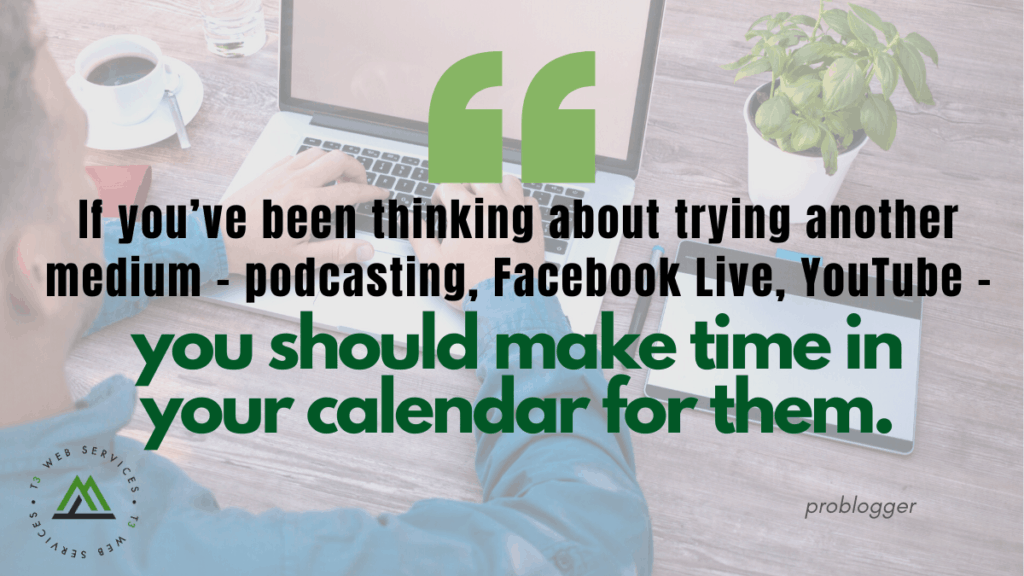

There’s no right or wrong way to do this. It really is a case of whatever works best for you. But here are some questions you may want to answer along the way.
Is there an emerging trend you’d like to focus on?
While reviewing last year’s content, did you spot any emerging trends in your niche? If you did, you might want to consider exploring them in more detail and sharing what you learn with your readers.
This doesn’t mean you need to talk about it in every post you write. But you may want to come back to it regularly. You may even want to create a series where your posts build on each other and take your reader on a journey.
You may even be able to create a product based on the information in your posts that you can sell on your blog.
Is there a type of post you’d like to write regularly?
Whether it’s because they did well last year or you simply enjoyed writing them, you may want to publish a particular type of post on a regular basis.
It could be a list post, an editorial-type post, a roundup post or something else. You could even give it a name such as Story Sunday or Tutorial Tuesday to tie it into a particular day of the week.
How often would you like to post?
How often did you post last year? Was it once a month, once a week, a few times a week or every day? And how did you go keeping up with that schedule? Was it a struggle, or did you take it all in your stride?
Now is the time to decide how often you feel comfortable posting. There’s no point in putting three posts a week in your content calendar if you’ll struggle to keep up. You’re much better off creating a schedule you’re comfortable with.

https://problogger.com/content-calendar/
How to Build the Perfect Facebook Ad Audience
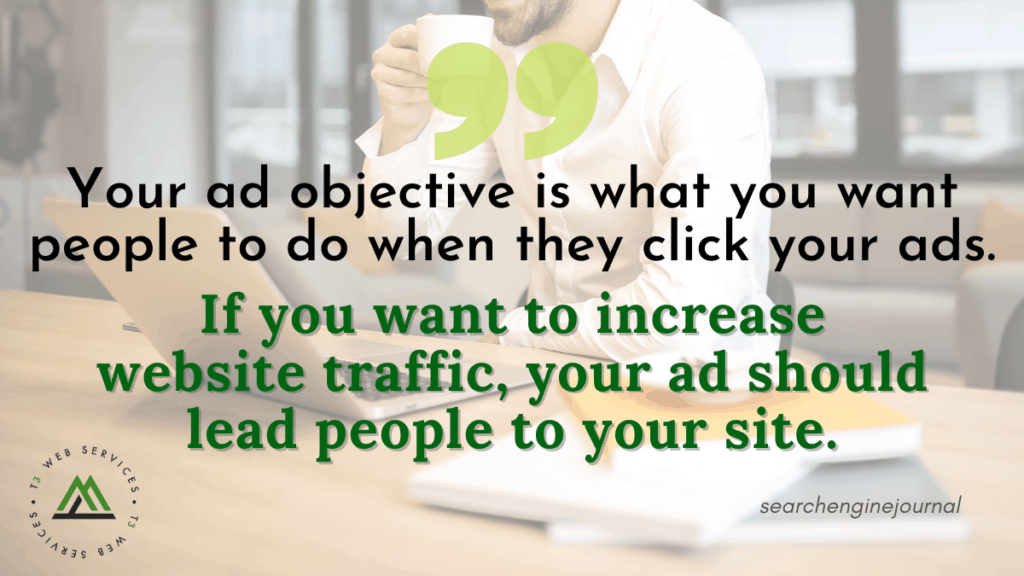

If you’re ready to achieve your business goals through Facebook advertising, start with discovering your audience first.
Here are seven steps to help you build the perfect Facebook ad audience:
Step 1: Create Your Goal
The first step involves some fundamental questions that must be addressed to build a sound advertising strategy.
Ask yourself these questions:
- What do you hope to achieve with Facebook ads?
- What is your main objective?
- How can you serve people?
- What do you want people to do?
- Where do you want people to go?
- What action do they take?
- What is the end goal?
Step 2: Craft Your Facebook Ad Audience
Your goal isn’t to reach all of those 2.7 billion active users, is it?
Because when you try to attract a broader audience, you have to spend a lot of money.
There’s no point in placing your ads in the feeds of Facebook users who have nothing to do with your business.
For example, if your product is designed for CEOs, you are wasting money by targeting people who are unemployed.
This is where you craft your audience and clearly define a group or groups of your potential clients or customers.
The goal is to get down to a relatively small audience of your ideal people.
Craft a Facebook ad audience of people who go through this process to be activated and warmed up to reach your goals.

https://www.searchenginejournal.com/build-facebook-ad-audience/391548/?utm_source=sej-feed
4 SEO Strategies for Programmatic Sites


1. Keyword research and keyword modifiers
In order to function both efficiently and effectively, it’s recommended that you divide site pages into a few templates before digging into the research itself. Some examples of these templates could include:
- Categories
- Sub-categories
- Product pages
- Static pages
- Blogs
- Informational pages
- Knowledge base/learning
Once you have all the page templates in place, it’s time to build keyword buckets and keyword modifiers.
Keyword modifiers are additional keywords that, once you combine them with your head terms and core keywords, help with long tail strategy. For example, modifiers for the head term “amazon stock” can be anything related to market share, statistics, insights, etc.
Programmatic pages typically hold the majority of the site’s pages. (Take Trulia, for example, which has over 30 million indexed pages — the majority of which are programmatic.) As a result, those pages are usually the most important on a larger website, both in terms of volume and search opportunity. Thus, you must ensure the use of the right keyword modifiers across each page template’s content.
Of course, you can’t go over every single page and manually modify the SEO tags. Imagine a website like Pinterest trying to do that — they’d never finish! . On a site with 30-100 million pages, it’s impossible to optimize each one of them individually. That’s why it’s necessary to make the changes across a set of pages and categories — you need to come up with the right keyword modifiers to implement across your various page templates so you can efficiently handle the task in bulk.
The main difference here, compared to typical keyword research, is the focus on keyword modifiers. You have to find relevant keywords that can be repeatedly implemented across all relevant pages.
2. Internal linking
Smart internal linking plans are vital for large sites. They have the ability to significantly increase the number of indexed pages, then pass link equity between pages. When you work on massive sites, one of your main priorities should be to make sure Google will discover and index your site’s pages.

https://moz.com/blog/programmatic-site-seo-strategies
21 YouTube SEO Tools to Boost Your Video Rankings


Most people consider YouTube as a social media platform, which it is, but it also behaves a lot like a traditional search engine. Visitors enter their query and get a list of videos ranked by relevance.
That’s why optimizing video content is critical to ranking and accessing the audience on YouTube. Fortunately, a lot of the traditional SEO rules apply here as well. Find the right keywords to communicate relevance, design a good user experience to drive engagement, and use analytics to find and fix whatever is not working.
Look up topics in Google Trends
Turn to Google Trends to see whether interest in your chosen topic is up or down. While you may be familiar with the overall Google Trends feature, click on “YouTube Search” to explore the video-related opportunities. Given that the data is coming from Google (which owns YouTube), it’s as trustworthy as it gets:
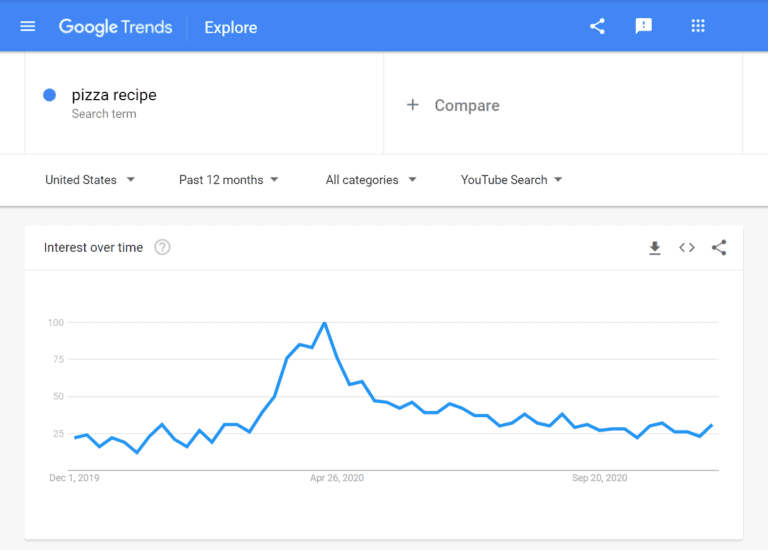
Identify the best keywords
To get your video content found, use the right keywords in your title, description, and tags.
The first place to look for the right keywords is YouTube’s autocomplete feature – start typing your seed keyword into the search bar and see how YouTube interprets it by showing autocomplete suggestions:
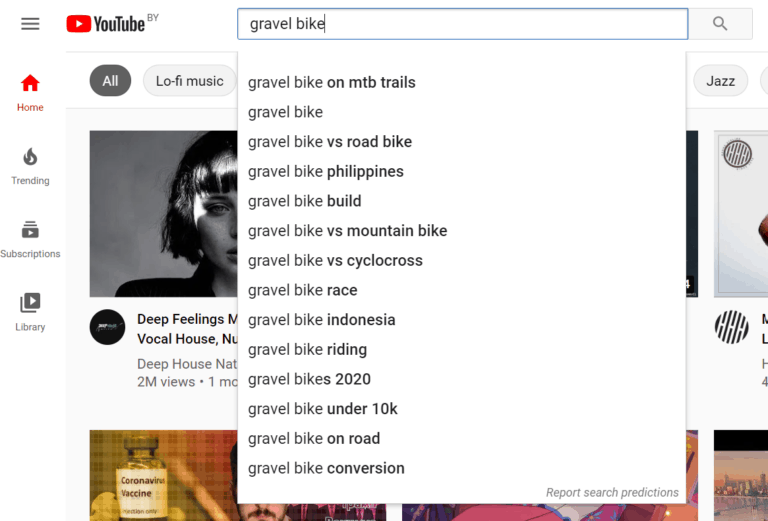

https://contentmarketinginstitute.com/2021/01/youtube-seo-tools-video-rankings/


Leave a Reply